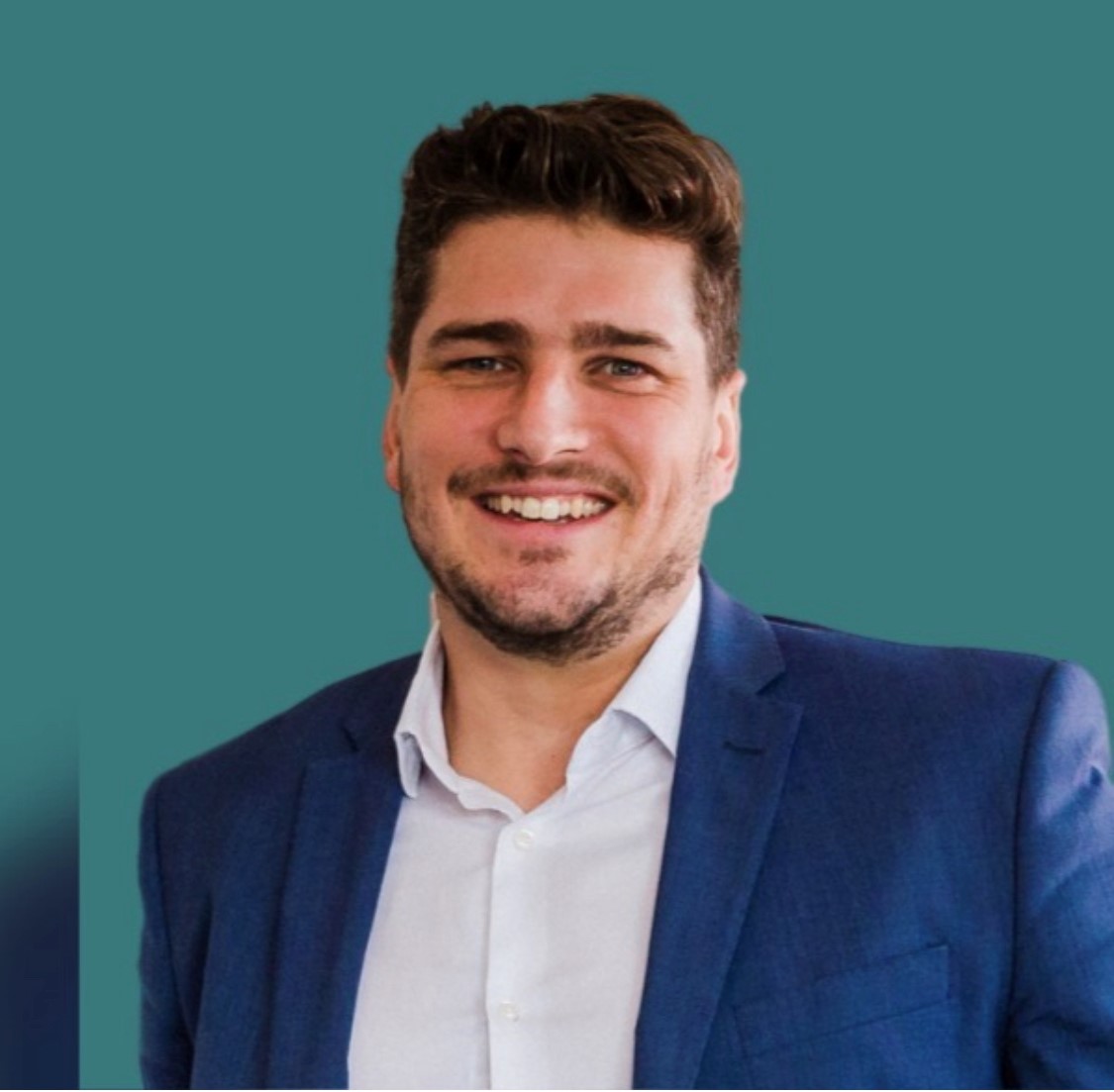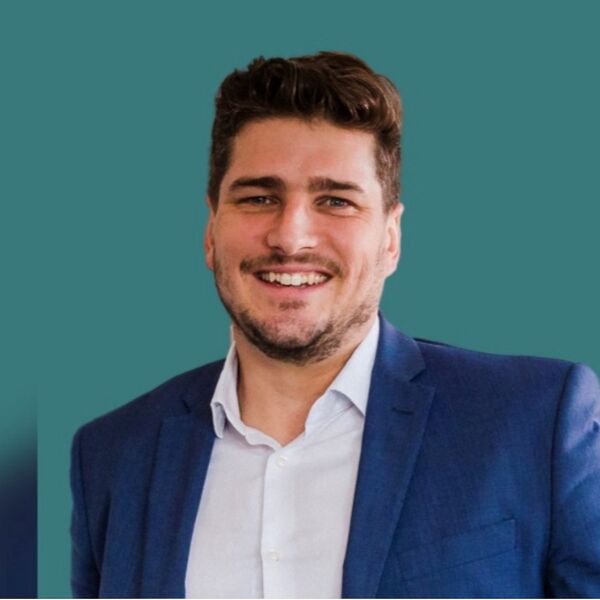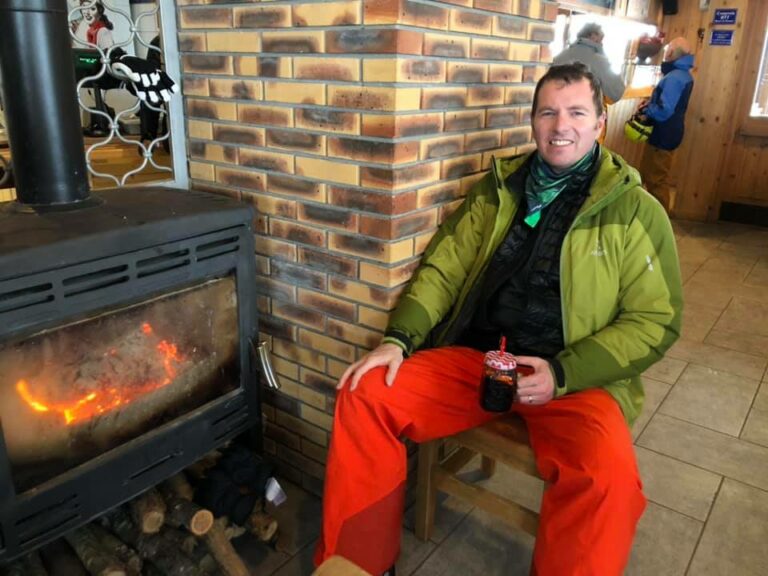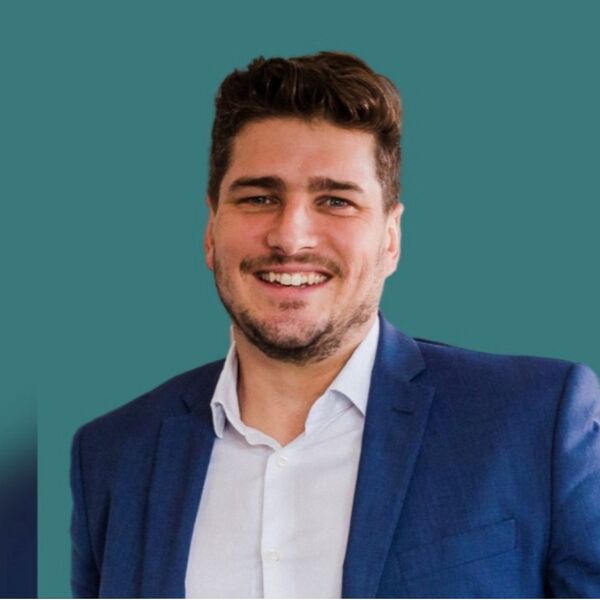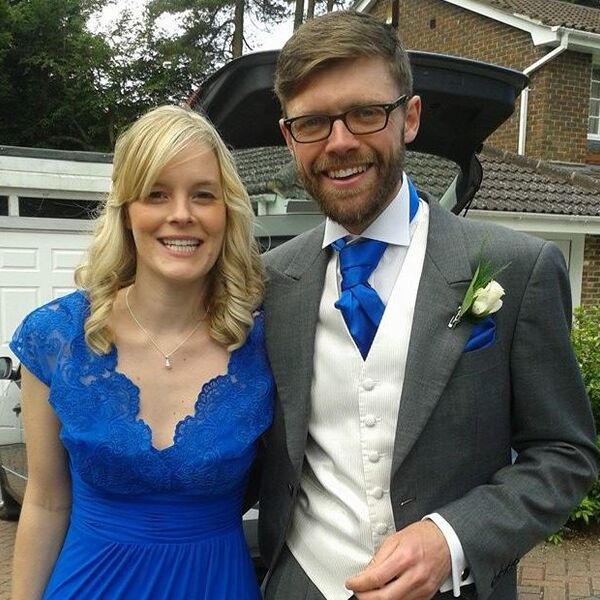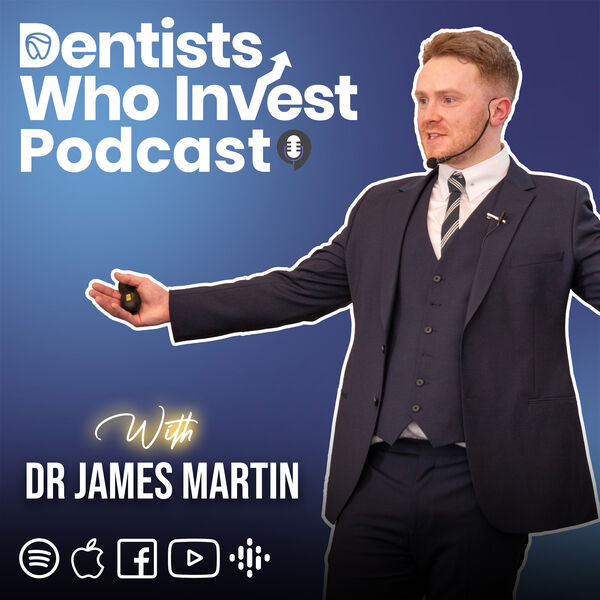EP233 Property A SIPP vs A SSAS with Jon Doyle
Property A SIPP vs A SSAS with Jon Doyle
Full Transcript
James:
Hey everybody, welcome back to the Dentists Who Invest podcast. We even have some super cool, super interesting episodes recently, and one of those episodes that we had most recently was Paul Barry talking about SaaS pensions, which somehow in 220 or so Denyssey Invest podcast episodes you never actually got to talking about, and really wet my whistle, so to speak. It took him a pickle and inspired me to talk a little bit more about SaaS pensions and bring that information to the Denyssey Invest community.
James:
And in that spirit, we’ve got returning guests and well-known faces Dentists Who Invest podcast IFA, Jon Doyle, joining us today. We’re not just going to talk about SaaS, we’re going to talk about Sips as well, but specifically, we’re going to talk about how property, be that our dental practice or commercial property, fits in into both of those investment vehicles. But before we jump into that, Jon, how are you today? How have you been?
Jon:
I’m very well. Thank you, james. I’m very well. We’re in the midst of tax year ends, so life is busy. Nothing like a big tax year deadline looming to cause people to come out of the woodwork and want stuff to get done. It’s brilliant, but it does make life rather busy at the moment.
James:
But keep it up Hashtag tax season. I can already see the Twitter posts. I can already see the posts on the IFA forums behind the scenes. So you can’t see Hashtag tax season with the SZM, of course.
Jon:
But anyway, Jon, good question. It won’t become as a surprise, but IFA don’t tend to use hashtags very often.
James:
Oh, what the heck.
Jon:
Because, mate, I don’t know there were. Some recent stats came out. The average IFA is still like in their 50s, nearly 60s, and I am still, having been an IFA over 15 years, one of the younger IFA’s in the country.
James:
Right. Well, Jon, in that case, there’s these things called hashtags. You put them on your posts on Facebook and on social media. You’ve heard of them.
Jon:
Just bringing Jon up to speed everybody.
James:
Anyway, we’re good, right, listen, I’m completely derailed in the conversation, just being silly. Now let’s go back to what we’re supposed to talk about Sips vs Sassas, and you know what would be really cool. We could just start off maybe doing a little bit of a comparison between the two, Jon, that would be a good place to begin.
Jon:
Yeah. So probably the easiest place to begin with the whole Sips vs Sassas thing is who owns, or like who is a member of the pension, right? So a SIP is a single person pension scheme. You have one individual who is a member of that pension scheme, whereas a SASS is a group pension scheme that is connected to an employer, to a company, so it’s a group occupational scheme and what you have with it is the potential to have many members of the pension scheme pooling their assets together so they own it as a percentage basis, as opposed to a SIP where you will just have one person who owns that pension sorry, getting ahead of myself mentioning property, slipping it in. So there is one of the biggest sort of differences between them. With a SIP, you’ve got a range of investment options. With a SASS, you’ve got a broader range of investment options. But also typically with a SASS, you as a pension member become a trustee of the scheme, so you’d have a greater degree of control. Again, you’re going to have to be taking part in making investment decisions and agreeing with the other members of the scheme what happens with the assets of the pension.
Jon:
Another big difference between the two is setup times. This is one that always causes a bit of surprise when you talk to people about it, because a SASS scheme is a scheme registered with HMRC in its own right, whereas with a SIP, you’ll go and get a SIP from a provider and it can be set up in a matter of minutes, often maybe a week or two if you’re going through a more serious advice process. Whereas a SASS, you have to fill in the application forms, submit an application to HMRC and wait for HMRC to approve your scheme, and this can take up to 12 weeks. So it’s a very, very different level of responsibility and scheme that you’re taking on. And the sort of final one is that a SASS has to be linked to a company when you’re setting up. It’s a company-sponsored pension, so there’s usually a limited company involved, and that can’t be a limited company set up for the sole purpose of setting up a SASS. Hmrc cracked down on that one a few years ago because people were abusing it.
James:
Thank you, Jon, for that high level synopsis of Sips versus Sassys. Let’s talk about something that you and I were catching up on about camera just before we hit the record button, and this was something that I learned from yourself just now. It’s fascinating and we definitely need to share this with the Dancing Invest audience. We’re talking about SIP providers, sip platforms, and how they’re actually not all one and the same, especially when it comes to the property side of things.
Jon:
Yeah. So when you get talking to real pension nerds and I don’t mean like me pension nerd, I mean like real pension nerds you start to get drawn into the legislative definitions of pensions and we get section 228s and we get all these sort of varying and different types of pensions, and SIP is specifically one type of pension scheme set up under a certain type of legislation. What we find is a lot of investment platforms like this legislation because it gives a very easy structure for them to create their pension scheme. So they create a SIP, but I would call this a SIP light. Okay, so you can, within that SIP, invest is within a SIP light. You know some of the direct to consumer platforms that are well known, the ones who sponsor the cricket and the ones who advertise on TV. You can buy a range of stocks and shares, a range of funds, a range of regulated investments through your SIP. If you then go to say a full fat SIP, you can then and these, these would be slightly more complicated, slightly more expensive, slightly more unknown names because they’re sort of more niche you can then purchase commercial property. You can purchase unlisted shares, so shares in your mates dental practice, for example, in your pension. You can own all sorts of different types of investments through a SIP, but you can’t do that through a SIP light, through a sort of direct to consumer, even at most advisor platforms. They’re much more just a flexible investment option.
Jon:
Here’s a cool little fact about pensions and that I read the other day Peter Theal, founder of PayPal, multi billionaire. He actually put some of his shares in PayPal in his whatever the US equivalent is of his pension. I think it’s 401k, but it might have been a got a few different, like Roth IRA and a few other names I’m not familiar with. He put those shares in his pension, which means that ever since he founded PayPal, the entire growth on his wealth has been tax free. And you think how, how rich Peter Theal is, scooby’s multi billionaire, and it’s all within the shelter of his investment portfolio. Cool customer, cool customer and you always doing clever cookie, clever cookie so.
Jon:
But you see this a lot. You know we’ll have a lot of inquiries come in. I’ve got a SIP with a well known provider, you know platform. I’ve asked them about buying my practice. They said I can’t do it. Why can’t I do it? I thought you could buy a property through a SIP. It’s because what they’ve actually got is a SIP light. It’s kind of a SIP in your legislation and name, but not in functionality.
James:
I’m just curious to know how easy it is to transfer your SIP light into a SIP Not so light. Full body SIP. Full fat SIP.
Jon:
Generally pretty straightforward. Just depends on whether you are going through an advice process, where you’ve got to go through the process of getting individual, personalized advice and we’ll need a lot of information about your situation, your objectives and everything to make sure we’re giving good advice or whether you just want to go out alone, do it yourself and run into whatever problems and complications there might be. And I would always come back to what are we? What is our objective here? If the objective is to build up a portfolio of commercial property or to buy the practice, then it is something we would need to consider, moving away from your SIP light. If you are simply wanting to invest in funds and shares and all the great companies of the world, sip light is fantastic. We use them all the time in our sort of advisor platforms, institutions, stuff that we do, and they’re absolutely fantastic. So it’s no shade on them. It’s just you can’t do it with everything.
James:
Got you. So, in other words, one type is like exclusively paper assets, but not all types of paper assets, and then one is more flexible.
Jon:
Yeah, if you buy paper assets you mean like funds and shares and stuff, and yeah, yeah, and then the other one, the sort of full fat SIP you would then have some assets on a platform and you might have some in sort of more tangible assets as well.
James:
What’s the technical terminology on the full fat SIPs, or is there one?
Jon:
SIP yeah.
James:
I thought it couldn’t be full fat SIP.
Jon:
No, no, no. You’ll find that, like when you dive into this, it’s like the word bond. We use bond for about 12 different things. We use SIP to mean different things and you kind of you just have to know if you know. If you don’t know, you don’t know, and you don’t know what you don’t know, and when you know, you know.
James:
So to speak when you know. You know exactly. There’s another reason for everybody. Anyway, okay, moving on, moving on. Where were we? So? Yes, anyway, let’s progress, let’s move forwards, let’s advance, and let’s talk about property within SIPs and SASSes and the differentials there, the ins and outs of that, because I was saying to you before the start of the podcast, broadly speaking, what most dentists will do is they’ll either have their dental practice and their pension or they’ll maybe have some commercial property.
James:
So, maybe a good place to start is we’ve covered a little bit about what’s possible in the SIP. Maybe if we do a SASS as a comparison.
Jon:
Well, really, if your aim is to purchase, let’s stick with what’s going to be most common in here when it comes to property, which will be the practice. Both the full SIP and a SASS will be suitable for purchasing the practice freehold and then a lease agreement will be put in place between the company and the pension scheme. Whether you’d consider one or the other will depend on a number of circumstances. Okay, one of those might be how many people are going to be involved in the purchase so you can group SIPs together, so you can get 10 people all with the same SIP provider. You couldn’t have like seven different SIP providers involved. That would just be a headache and cost you a fortune. If you’ve got like a group of people with the same SIP provider, they would be able to group together and purchase the property. And I’ve you know some clients, I know who are barristers, chambers. There’s like 70 barristers and they’ve done this with their SIPs, so fairly successful, and you can buy in, buy out.
Jon:
You might want to do that where everybody who’s going to partake in the purchase has different objectives that they’re wanting long term, or there’s a big age differential, so different retirement objective of the people involved in the scheme or you’re worried about fallout and the ability to have to unwind the scheme.
Jon:
Because this is where the differences and these are quite nuanced between SIP and SAS come in. If we keep things relatively simple and we think about three business partners owning a practice together one in their 30s, one in their 40s, one in their 50s Now, if you’re in your 30s, you may want to own part of the freehold but then invest in high risk manner because you’re like I can’t touch my pension for 30 years, I don’t want to retire for ages. You know I want to go high risk and fall 100% equities or whatever else you might think of doing, but your man in his 50s might be going five years and I’m out, so I don’t want to invest in a high risk way. Within a SAS, they all own the portfolio and they all make the decisions on how it’s invested. Together. It’s a grouped thing. Probably the best way to think about it is almost the same as a company where you own shares.
Jon:
Okay, you go on and you each own a share of this pension and you can get into segregated assets and some complex sort of things to kind of help navigate this, but you all own it, so that when what can happen and I’ve seen this happen is you then have you know. You move 20 years down the line and you’ve got one in his 70s, one in his 60s, one in his 50s. The one in his 50s is still working and running the practice. The other two are retired. So then you’ve got lease agreements and all this kind of stuff going on and you’ve got a difference of opinions within the SAS over who does what how, whereas within a SIP arrangement, you would group your SIPs together to buy the practice. But whatever else you’ve got in your SIP is yours and you can do with it as you want, if you want to in cash, if you want to investments, those sort of things. So that is one reason why you might prefer the sort of group SIP route is what are the objectives of all the individuals who are partaking in this and what’s our out? How would we, you know, dissolve this upon exit?
Jon:
However, moving SIP provider is very, very difficult, because what you would have to do if you if you became dissatisfied with your SIP provider or they ran into any sort of complications, you are transferring all the assets to a new SIP provider, and so it’s a, you know, a convincing job. It’s a change of ownership at the land. Registry is to what’s happening. It’s not a straightforward situation and it can take time and description and costs involved, and as SAS we may have some of the complications of it being a grouped investment. But if you fall out of love with your SAS provider and your professional trustee, you can do a SAS takeover and just appoint a new SAS trustee who will take over the existing scheme, and it can be relatively straightforward as long as there aren’t any big problems or liabilities are going to take over.
Jon:
You’ve got some of these sort of complications and nuances that happen when you’re thinking about doing this long term, and the more individuals you add to the scheme or to the what you’re trying to achieve, the more complex it can be and the more thought that probably needs to go into it, I would say. Most commonly, though, when I’m looking at these, I’m looking at a husband and wife team or a solo practice owner, so it’s a bit more of a straightforward thing the husband and wife team split up. It’s getting messy regardless of where it is, so it’s you know, that’s how it goes, wow.
James:
So, yeah, you had a question. No, not, I mean, I was just going to, I was going to chip in with a few things, but I certainly don’t want to interrupt if you’re in. No, please, please, please, james, please. No, I was, I was saying it’s. It’s fascinating really, isn’t it? Because I see so many people have SIPs but SAS is so much more off the beaten track.
Jon:
Yeah, yeah, they’re the sort of they’re probably one of the oldest forms now of pension legislation. I’ve got clients with SAS is that go back to the 1970s. You know the we’re talking long standing pension schemes here that have been multi generational within families. One of the SAS is I know of has fourth generation now within within the scheme with millions, millions in assets within it, and so they can be really effective long term planning tools. But because they are a little bit more clunky, let’s say you know the providers or the trustees tend to be smaller operations. We use a couple who have got great technology, got platform, well, online portals you can log in and see what’s going on and your paper. But for a long time you’re talking about bits of paperwork sent out, folders of information going back years and years, checkbooks being used to to invest money. Even up until a few years ago they were just a bit more clunky. They just fell out of favor a little bit.
Jon:
For me, one of the things that’s bringing SAS back into the picture is this question about control. It’s this question about what happens if things start to go wrong, because there are a few sip providers out there that have run into problems. You know, changes in legislation, changes in, you know, allowing some bad investment advice to go on allowing certain unlisted investments or high risk investments, unregulated investments, and it’s caused those sit providers to have really big problems. You know, one of those that’s very in the news in the advisor world maybe, but in the news at the moment is one called Hartley sass. They went and bought a whole load of SIP companies. Sas for them is for SAS, I don’t know.
James:
Oh yeah, it’s nothing to do with the patience, Right yeah? So as.
Jon:
I was saying I was. I’ll bear clarify this spoke slightly differently. I have a few clients in in it, in tech as well. As for them, sas is software as a service.
James:
It’s a company that’s self-administered scheme.
Jon:
So you got this company Hartley sass so we’ll just call them Hartley for the avoidance of confusion and they went on a big buying spree. They bought up a load of SIP companies and, right, I don’t know, I didn’t, didn’t do proper due diligence on them, or bought, bought some companies, big liabilities, and they went into administration about 18 months ago. Now none of the investors money is at risk within those SIPs, but also they can’t do anything with their pensions. At the moment, you know, I’ve had contact we don’t have any clients with them. We did have some clients with a company that were bought by them and we moved those clients on very, very quickly before it all went to.
James:
It’s up, I’ll say it all went to.
Jon:
I was searching for the phrase, it all hit the fan, you know. So we’ve had contacts, you know, from some people who have pensions with them and it’s 18 months on. They can’t start running income from their pensions because there’s no way to administer it. They can’t transfer those pensions to new providers. They’re stuck in limbo waiting for the administrators of that pension scheme to deal with the administration process, which has been long. It’s been expensive. The insolvency practitioners have racked up fees.
Jon:
If this was a SAS, all the there were a few SAS is that hardly had. They will been sorted and easy to go done Because there’s been no liabilities taken on by that SAS provider. It’s all easy and sorted. But the SIPs much more difficult process. You know, if you’re thinking about moving a thousand commercial properties to a new SIP provider, you’ve got to find some structure for moving all of those and the legal fees and the convincing and land registry and all of the stuff that comes with it leases needing new trustees put on it it becomes a very complex thing.
Jon:
So that’s one of the reasons why SAS has come more to the floor and the other is the increasing cost of debt, because one of the elements of SAS that we’ve not talked about yet is the loan back and the ability to loan money from the SAS to your company, secured against certain assets, and you can do that at very good interest rates.
Jon:
One of the things that’s really caused a lot of inquiries for us recently is dentist to have felt the pinch because you know there’s still a relatively good deal, but the effect, shall we say, of rising interest rates, and where they were paying two or 3% over base at 0.25% or 0.5% base rates, they’re now paying that on 5% and they go. What can we do? And if they own the freehold of the practice, we can do a little flipper route move some pension money up, put the property in, get the pension money out clear for loaded debt, and we’re in a really, really sweet position. But then also that ability to lend money out of the pension scheme to the practice instead of taking other finance routes can also be a really attractive thing for expansion or for other purposes.
Jon:
Lending to yourself basically Lending it to your company. Yeah, yeah. So using that pension money, that SAS money to really accelerate your objectives in business.
James:
Yeah, and what is that rate? I’d have, curiously, market market in Veracomus.
Jon:
Yeah, it’s a market rate. Have I got an exact figure on here? It is again the rate that you’d lend it to yourself. It’s something like 1% over base Okay, so it’s maybe slightly more attractive than you’d get from the bank at the moment. We’ve also got to think is it almost doesn’t matter what that rate is, because it’s your pension that’s getting that cream? Yeah?
James:
So we’ve got charges.
Jon:
Yeah, so you, instantly, you get it. It’s like, instead of paying 7%, 8% to Lloyds or Barclays or whoever your bank is, I’m paying 7% to my pension scheme for this money, and that is the return on investment my pension is getting by lending me the money.
James:
And remind me, does it? Necessarily have to be more than one person to have a SAS.
Jon:
No, you can have single member SAS. Yeah, we’ve got a few clients with single member SAS. Is that we went down that road for this reason, Because of the worries about SIPs and all the potential problems and fighting reliable SIP trustees and everything else, and then the ability to have the loan back features and some of the other areas that we can do. There’s a few more things we can do SAS that won’t go in today because they’re you know, it’s probably one of those things that someone will hear and go brilliant and then run into a dead end with it.
James:
But with advice. You want to be responsible?
Jon:
Well do you know what, Jon?
James:
Actually I think that that’s probably a really nice note to wrap things up on, unless, if you let, there’s anything else in there of relevance.
Jon:
The only other thing that’s probably worth talking about is why why you would want commercial property as an asset in your pension. Yeah, why is it attractive we’re thinking long term if we’ve got sort of five, ten minutes just to talk.
James:
Yeah, let’s do it Absolutely.
Jon:
Yeah, so one of the things that happens quite a lot when dentists come to sell is they’ll sell the goodwill and they’ll hold on to the practice. Some of this is because some of the corporates don’t want the practice because it’s only going to make them six to 10% return on capital, whereas the goodwill, the trade, is going to make them 20 to 30% return on capital. So why would you?
James:
It’s just about that, Jon. Internet connection just dropped a quick just then. But you know what it was actually a good point for me to jump in just to clarify something there, because when I heard that 6% figure, what that said to me was and interestingly I know this figure because I’m the sort of geek who looks at long term returns on various types of assets and that 6% figure, just to clarify.
James:
If I’m correct, that’s the average return on UK property over many years. That’s where the return on investment comes from. Have I got that right?
Jon:
Broadly speaking, yeah, where you are in the country, you’ll make a difference. I had this conversation with the client yesterday, particularly in the South East. You might be talking about 6%. Up in the Northwest or the Northeast you might be getting up towards 10% yield on a commercial property, but broadly speaking, 6% to 10% is what you’re going to get as a return on a commercial property. If it’s worth 400 grand, you’re going to get something like 20,000 to 40,000 pounds worth of rent on that property.
James:
Right, right, right right. I’m with you.
Jon:
Oh, so that’s the rent on you, yeah, yeah. Got you, got you, got you. Now this is where corporates don’t want them. Because if you’re a shareholder of a corporate and you’re putting money into a corporate, you want as much return on that money as you can muster. And if you know what’s a good dental practice going to make after you’ve paid, everyone Should be making 25, 30%, something like that. Service business should be relatively high in returning. I’m sure there’s someone all correctly on those figures, but we’re talking sort of broad figures right.
James:
Well, you know what? Let’s just. If we just stick to those figures, that’s fine, because this is something that Dennis argued about, all the downtime anyway. So we can. You’re never going to be leaving when you say those figures, so let’s give up on that hope from the outside.
Jon:
If you say, if it’s associate led, everyone’s paid bills paid, ebitda 25%, if you’re then going to take you know, let’s say you’re a group of shareholders and you’ve put a million quid into this company to get it going. Would you rather that they put that million quid towards something that’s going to make 20, 25% or something that’s going to make 6% to 10%?
James:
Well, it makes sense. And then of course, every of that million, let’s say half goes to the 6% return, then the other half goes to the 20, 25% return. Well, that’s opportunity cost on the first half million. So they want every pound invested, working as hard as possible. So that’s interesting and I see the logic.
Jon:
So the commercial probably drags down the return of investment for the corporates, which is why they don’t want it. But for the retiring dentist or for the commercial property investor because there’s a few dental practices that do come up on the open market it’s a low risk investment because you can’t move a dental practice easily. You can’t kind of go well, we’re just going to move over the road and just set up shop. It’s not like an office where you just need a desk and a telephone. It’s like easy, it’s expensive, it’s clunky, you’ve got patients needing to go as soon as you complex moving a practice. So you’ve got long-term tenant and you’ve got good rental yield.
Jon:
And to go bust as a dentist is hard work. It’s a stable. There’s more demand than there is supply, so we should be in a fairly strong place. So as a tenant, as an investment risk, it makes a very attractive proposition. So you’ve got this beautiful spot of. It’s an income-producing asset. I’m at retirement, I need income, it’s relatively low risk and the lease you’re going to sign is going to be 10, 15 years or something like that and you’re going to be in quite a secure position. So they make quite attractive assets.
Jon:
And I think this is where, as commercial property investors, sometimes we lump all of these in as one asset commercial property. And if we really zoom in on what commercial property is, there’s a whole load of different types of commercial property. You’ve got retail, you’ve got office space, you’ve got warehousing, you’ve got medical and dental type stuff. There’s a whole range of different commercial properties that will come with different risks. If you’re renting out to a high street retail, it’s pretty messy right now. Would you want to have HMV as a tenant in your commercial property portfolio? Genuine, I have a client who did have an HMV for a while as a tenant in one of their commercial properties. They also have a museum in their portfolio which is a brilliant tenant because it’s got like a hundred year lease on it. It’s not very high in returning, but you’ve got a hundred year lease from a massive museum, so very attractive.
Jon:
So when you’re looking then as a commercial property investor, really understanding your niche, what part of the market you’re going to understand and that’s where I think most people end up going. I’ll just own my own dental practice or dental practices and the freeholds in there and I can play that game. I know the tenant because it’s my practice. I love it, I run it and we can keep it kind of straightforward, but I have seen people go and really run with this and end up with really good opportunities. A couple of caveats on the commercial properties it’s got. There are some real do’s and don’ts, which is where you need to seek professional advice. Something that could be construed as residential causes problems, mixed usage problems. So there’s a whole load of technicalities we’ve got to wait through to make sure this is okay. But it can be a really attractive thing to do. It can be very beneficial thing to do.
James:
Awesome. Well, yeah, I mean it is something that is obviously beneficial to that retirement dentist, because it’s. I don’t. I haven’t bugbear about the word passive income, because you have to do something at some point to actually attain the residual income.
James:
So I feel like if we talk about passive income, then everybody subconscious mind is like, okay, we should just look for the easy thing that just gives us continuous money. But there has to be some effort at some point. So I feel that through us liberal use, I’m going to run passive income, right? I don’t know where this came out, with you on it. Well, it bothers me, right?
James:
And anyway where I was going with that was when it comes to the whole passive income thing, basically you have to put some effort in at some point, but then with time it can resemble that concept, that commonly thrown around concept of how it looks, which is basically money when you’re sitting at home in the house on the sofa or whatever. So it’s a nice setup. For those people who reached that point is really really, really cool.
James:
I’m right in saying that you have to set up correctly at the start, at the start that the companies there has to be the goodwill in one company and then the freehold in another company.
Jon:
right, if you’d be able to move it around, or certainly it’s easier If well, you talking here about a dental practice that is owning its own dental practice as in, you’ve got the business itself in one limited company and then you’ve got the building in another company.
Jon:
I believe that doesn’t have to be that way. Now it doesn’t have to be that way and often we come across it it’s not that way where they are in all in one. I’ve seen it where they’re in separate companies, sometimes in a holding company where you’ve got a. The holding company owns the dental goodwill company, the trading company and the holding company owns the property, sometimes through sort of related companies with the same shareholders but not interrelated in the way a holding company would be, and sometimes where they own it personally. So there’s lots of ways to structure it. The reasons you wouldn’t have it all in the same limited company are usually risk based. You slip a drill through someone’s face, end up scarring them. You weren’t insured. You can get sued. You could lose your building if it’s in the same company. Being slightly jokey about this sort of level of stupidity that you’d have to do to end up in that situation.
James:
But this is the thing. It doesn’t have to be you, it can be one of your associates as well. Yeah, you know, and yeah, yeah.
Jon:
So that’s where you would move the property to another structure like a limited company, separate limited company, like a holding company or a sip or a sass, or own it outside of the company, just because it separates it all out from a risk perspective. But it doesn’t have to be done that way for any other reason. The big things always start with the end in mind. You know you start with. What position do I want to end up in in 10, 15, 20 years time? What are we working towards? Because that’s going to give us the clue to how we want to structure this from the outset Zing, Boom.
James:
Jon, thank you so much for your time. It’s a pleasure On the best podcast today. Jon, anybody listening wants to reach out to you. How can we find you? How’s the best way?
Jon:
Yeah, so you can find our website’s juniplewealthcouk. If you are interested in speaking to me, you can go juniplewealthcouk forward, slash discovery-cool and we can schedule something in. You can find me on Instagram and Twitter at junipleworldcom and, of course, you can find me on the Facebook group itself.
James:
Jon, once again, thanks so much for your time. My friends, Always fun having you here on the best podcast. I’m always looking forward to the next episode. We shall speak to each other very soon. See you then. Speak soon.
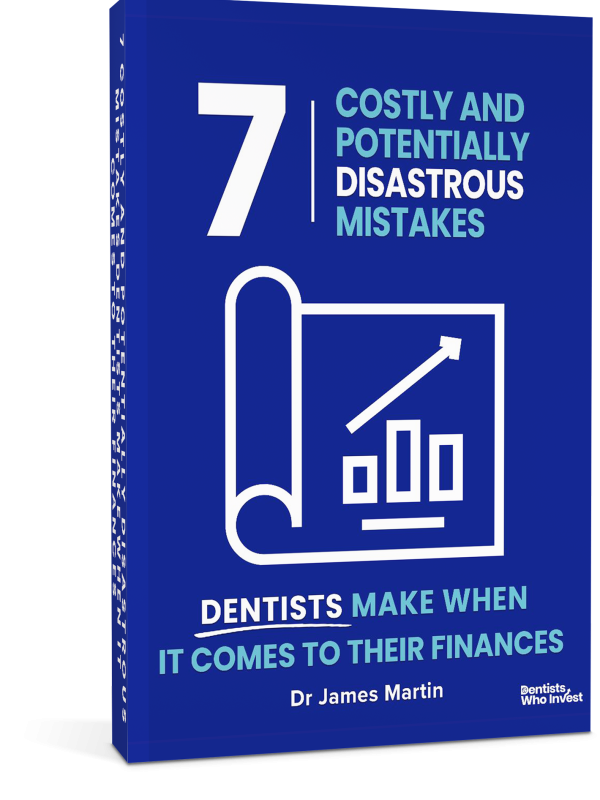
Never Miss A Dentists Who Invest Podcast Episode Again And Also Receive A Free Report On Investing
Type your details below to download your FREE report
BY SUBMITTING MY EMAIL I CONSENT TO JOIN THE DENTISTS WHO INVEST EMAIL LIST. THIS LIST CAN BE LEFT AT ANY TIME.

Never Miss A Dentists Who Invest Podcast Episode Again And Also Receive A Free Report On Investing
BY SUBMITTING MY EMAIL I CONSENT TO JOIN THE DENTISTS WHO INVEST EMAIL LIST. THIS LIST CAN BE LEFT AT ANY TIME.

